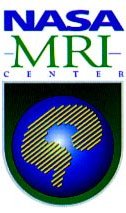X-rays
MRI (magnetic resonance imaging)
When protons (here brain protons) are placed in a magnetic field, they become capable of receiving and then transmitting electromagnetic energy. The strength of the transmitted energy is proportional to the number of protons in the tissue. Signal strength is modified by properties of each proton’s microenvironment, such as its mobility and the local homogeneity of the magnetic field. MRI signal can be “weighted” to accentuate some properties and not others.When an additional magnetic field is superimposed, one which is carefully varied in strength at different points in space, each point in space has a unique radio frequency at which the signal is received and transmitted. This makes constructing an image possible. It represents the spatial encoding of frequency, just like a piano.
CT (roentgen-ray computed tomography)
A beam of x-rays is shot straight through the brain. As it comes out the other side, the beam is blunted slightly because it has hit dense living tissues on the way through. Blunting or “attenuation” of the x-ray comes from the density of the tissue encountered along the way. Very dense tissue like bone blocks lots of x-rays; gray matter blocks some and fluid even less. X-ray detectors positioned around the circumference of the scanner collect attenuation readings from multiple angles. A computerized algorithm reconstructs an image of each slice.
Myelogram
This was, and may yet still be the “gold-Standard” for very difficult spinal diagnostic problems.. It involves a lumbar puncture using a 22 gauge spinal needle (smaller needle than when your blood is drawn!), and then a “radiopaque “dye” is injected. The Neurosurgeon, or neuroradiologist can then move the patient about, watching the dye flow over the nerve structures. It is most helpful when there has been prior surgery, particularly when metal instrumentation is present. Even still, the MRI has nearly made this test obsolete…but not yet!
Read more about Myelogram here
SPECT/PET (single photon/positron emission computed tomography)
When radio-labeled compounds are injected in tracer amounts, their photon emissions can be detected much like x-rays in CT. The images made represent the accumulation of the labeled compound. The compound may reflect, for example, blood flow, oxygen or glucose metabolism, or dopamine transporter concentration. Often these images are shown with a color scale.by Keith A. Johnson, M.D., Harvard Medical School Diagnostic Imaging Center Lausanne, Switzerland


